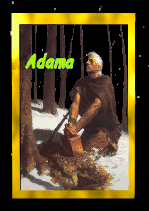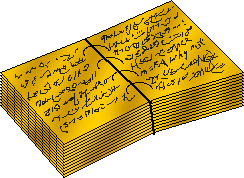
Forum encyclopédique d'histoire des Mormonismes et de la Franc-Maçonnerie & archéologie - sciences - aéronautique - paranormal - ufologie- orbs - ésotérisme - symbolisme
|
|
| | Han Dynasty |  |
| | | Auteur | Message |
|---|
Commandeur Adama
Magister Ordo Kolob - Admin

Nombre de messages : 8905
Age : 60
Localisation : Pays de Néphi - Mormon forest
Date d'inscription : 16/02/2007
Chevalier de Kolob - Vers la Sagesse
 A reçu la Lumière: 180 A reçu la Lumière: 180
 En quête du Vase Précieux et Elu: En quête du Vase Précieux et Elu:
    (150/200) (150/200)
 A la recherche du couple de Licornes du Jardin d'Eden: A la recherche du couple de Licornes du Jardin d'Eden:
    (7/700) (7/700)
 |  Sujet: Han Dynasty Sujet: Han Dynasty  Sam 17 Nov - 3:19 Sam 17 Nov - 3:19 | |
|  "Later Han" redirects here. For the Five Dynasties and Ten Kingdoms period dynasty, see Later Han Dynasty (Five Dynasties). The Han Dynasty (traditional Chinese: 漢朝; simplified Chinese: 汉朝; Hanyu Pinyin: Hàn Cháo; Wade-Giles: Han Ch'ao; 206 BC–220 AD) followed the Qin Dynasty and preceded the Three Kingdoms in China. The Han Dynasty was ruled by the prominent family known as the Liu (劉) clan. The reign of the Han Dynasty, lasting over 400 years, is commonly considered within China to be one of the greatest periods in the history of China. To this day, the ethnic majority of China still refer to themselves as the "Han people." During the Han Dynasty, China officially became a Confucian state and prospered domestically: agriculture, handicrafts and commerce flourished, and the population reached over 55 million people. Meanwhile, the empire extended its political and cultural influence over Korea, Mongolia, Vietnam, Japan, and Central Asia before it finally collapsed under a combination of domestic and external pressures. The first of the two periods of the dynasty was the Former Han Dynasty (traditional Chinese: 前漢; simplified Chinese: 前汉; pinyin: Qiánhàn) or Western Han Dynasty (traditional Chinese: 西漢; simplified Chinese: 西汉; pinyin: Xī Hàn) 206 BC–24 AD, seated at Chang'an. The Later Han Dynasty (traditional Chinese: 後漢; simplified Chinese: 后汉; pinyin: Hòu Hàn) or Eastern Han Dynasty (traditional Chinese: 東漢; simplified Chinese: 东汉; pinyin: Dōng Hàn) 25–220 AD was seated at Luoyang. The western-eastern Han convention is currently used to avoid confusion with the Later Han Dynasty of the Period of the Five Dynasties and the Ten Kingdoms although the former-later nomenclature was used in history texts including Sima Guang's Zizhi Tongjian. The Han Dynasty was notable also for its military prowess. The empire expanded westward to the Tarim Basin (in modern Xinjiang-Uyghur Autonomous Region), with military expeditions as far west as beyond the Caspian Sea, making possible a relatively safe and secure caravan and merchantile traffic across Central Asia. The paths of caravan traffic are often called the "Silk Road" because the route was used to export Chinese silk. Chinese armies also invaded and annexed parts of northern Korea (Wiman Joseon) and northern Vietnam toward the end of the 2nd century BC. Han Dynasty control of peripheral regions was generally insecure, however. To ensure peace with non-Chinese local powers, the Han court developed a mutually beneficial "tributary system." Non-Chinese states were allowed to remain autonomous in exchange for symbolic acceptance of Han overlordship. Tributary ties were confirmed and strengthened through intermarriages at the ruling level and periodic exchanges of gifts and goods. Emergence  Western Han painting on silk was found draped over the coffin in the grave of Lady Dai (c. 168 BC) at Mawangdui near Changsha in Hunan province. Within the 1st three months after Qin Dynasty Emperor Qin Shi Huang's death at Shaqiu, widespread revolts by peasants, prisoners, soldiers and descendants of the nobles of the six Warring States sprang up all over China. Chen Sheng and Wu Guang, two in a group of about 900 soldiers assigned to defend against the Xiongnu, were the leaders of the first rebellion. Continuous insurgence finally toppled the Qin dynasty in 206 BC. The leader of the insurgents was Xiang Yu, an outstanding military commander without political expertise, who divided the country into 19 feudal states to his own satisfaction. The ensuing war among those states signified the 5 years of Chu Han Contention with Liu Bang, the first emperor of the Han Dynasty, as the eventual winner. Initially, "Han" (the principality as created by Xiang Yu's division) consisted merely of modern Sichuan, Chongqing, and southern Shaanxi and was a minor humble principality, but eventually grew into an empire; the Han Dynasty was named after the principality, which was itself named after Hanzhong (traditional Chinese: 漢中; simplified Chinese: 汉中; pinyin: hànzhōng) — modern southern Shaanxi, the region centering the modern city of Hanzhong. The beginning of the Han Dynasty can be dated either from 206 BC when the Qin dynasty crumbled and the Principality of Han was established or 202 BC when Xiang Yu committed suicide. | |
|   | | Commandeur Adama
Magister Ordo Kolob - Admin

Nombre de messages : 8905
Age : 60
Localisation : Pays de Néphi - Mormon forest
Date d'inscription : 16/02/2007
Chevalier de Kolob - Vers la Sagesse
 A reçu la Lumière: 180 A reçu la Lumière: 180
 En quête du Vase Précieux et Elu: En quête du Vase Précieux et Elu:
    (150/200) (150/200)
 A la recherche du couple de Licornes du Jardin d'Eden: A la recherche du couple de Licornes du Jardin d'Eden:
    (7/700) (7/700)
 |  Sujet: Re: Han Dynasty Sujet: Re: Han Dynasty  Sam 17 Nov - 3:22 Sam 17 Nov - 3:22 | |
| Taoism and feudal system  A Han Dynasty bronze mirror The new empire retained much of the Qin administrative structure, but retreated somewhat from centralized rule by establishing vassal principalities in some areas for the sake of political convenience. After the establishment of the Han Dynasty, Emperor Gao (Liu Bang) divided the country into several "feudal states" to satisfy some of his wartime allies, though he planned to get rid of them once he had consolidated his power. After his death, his successors from Emperor Hui to Emperor Jing tried to rule China combining Legalist methods with the Taoist philosophic ideals. During this "pseudo-Taoism era", a stable centralized government over China was established through revival of the agriculture sectors and fragmentations of "feudal states" after the suppression of the Rebellion of the seven states. Emperor Wudi and Confucianism  A Han Dynasty incense burner with a sliding shutter, 172 BC. During the "Taoism era", the government reduced taxation. This policy of the government's reduced role over civilian lives (traditional Chinese: 與民休息; simplified Chinese: 与民休息; pinyin: yǔ mín xiūxi) started a period of stability, which was called the Rule of Wen and Jing (Chinese: 文景之治; pinyin: Wén-Jǐngzhīzhì), named after the two Emperors of this particular era. However, under Emperor Wu's leadership, among the most prosperous periods of the Han Dynasty, the Empire was able to strike back. At its height, Han China incorporated the present day Qinghai, Gansu, and northern Vietnam into its territories, as well as military expeditions into Siberian land beyond Lake Baikal in the northern extremeties and establishing military bases on the shores of the Caspian Sea in the western extremeties. Emperor Wu decided that Taoism was no longer suitable for China, and officially declared China to be a Confucian state; however, like the Emperors of China before him, he combined Legalist methods with the Confucian ideal. This official adoption of Confucianism led to not only a civil service nomination system, but also the compulsory knowledge of Confucian classics of candidates for the imperial bureaucracy, a requirement that lasted up to the establishment of the Republic of China in 1911. Confucian scholars gained prominent status as the core of the civil service. Government  A Han Dynasty pottery tomb model of a tower with corbel brackets supporting balconies, 1st-2nd century. The bureacratic system of the Han Dynasty can be divided into two systems, the central and the local. As for the central bureaucrats in the capital, it was organized into a head cabinet of officials called the Three Lords and Nine Ministers (三公九卿). This cabinet was led by the Prime Minister (丞相), who was included as one of the three lords. Officials were graded by rank and salary, were appointed to posts based on the merit of their skills rather than aristocratic clan affiliation, and were subject to dismissal, demotion, and transfer to different administrative regions.[1] The local official during the former Han Dynasty was different from that of the later Han Dynasty. As for the former Han, there were two administered levels, the county (郡) and the xian (縣). In the former Han Dynasty the xian was a subdivision or sub-prefecture of a county. During the Han period, there were about 1,180 of these xian, or sub-prefectures.[2] The entire Han Empire was heavily dependent upon its county governors (郡太守), as they could decide military policy, economic regulations, and legal matters in the county they presided over. According to historians Ebrey, Walthall, and Palais: “ They collected taxes, judged lawsuits, commanded troops to suppress uprisings, undertook public works such as flood control, chose their own subordinates, and recommended local men to the central government for appointments.[1] ” The main tax exacted on the population during Han times was a poll tax, fixed at a rate of 120 government-issued coins for adults.[1] For adults there was also the addition of mandatory labor service for one month out of the year. Besides the poll tax, there was also the land tax administered by county and commandery officials. This was set by the government at a relatively low rate of one-thirtieth of the collected harvest.[1] | |
|   | | Commandeur Adama
Magister Ordo Kolob - Admin

Nombre de messages : 8905
Age : 60
Localisation : Pays de Néphi - Mormon forest
Date d'inscription : 16/02/2007
Chevalier de Kolob - Vers la Sagesse
 A reçu la Lumière: 180 A reçu la Lumière: 180
 En quête du Vase Précieux et Elu: En quête du Vase Précieux et Elu:
    (150/200) (150/200)
 A la recherche du couple de Licornes du Jardin d'Eden: A la recherche du couple de Licornes du Jardin d'Eden:
    (7/700) (7/700)
 |  Sujet: Re: Han Dynasty Sujet: Re: Han Dynasty  Sam 17 Nov - 3:27 Sam 17 Nov - 3:27 | |
| Culture, society, and technology  A replica of Eastern Han Dynasty inventor Zhang Heng's seismometer, Houfeng Didong Yi The intellectual, literary, and artistic endeavors revived and flourished during the Han Dynasty. The Han period produced by birth China's most famous historian, Sima Qian (145–90 BC), whose Records of the Grand Historian provides a detailed chronicle from the time of legendary Xia emperor to that of the Emperor Wu (141–87 BC). Technological advances also marked this period. One of the great Chinese inventions, paper, dates from the Han Dynasty, largely attributed to the court eunuch Cai Lun (50 - 121 AD). By the 1st century BC, the Chinese had discovered how to forge the highly durable metal of steel, by melting together wrought iron with cast iron. There were great mathematicians, astronomers, statesmen, and technological inventors such as Zhang Heng (78 - 139 AD), who invented the world's first hydraulic-powered armillary sphere.[3][4] He was also largely responsible for the early development of the shi poetry style in China. Zhang Heng's work in mechanical gear systems influenced countless numbers of inventors and engineers to follow, such as Ma Jun, Yi Xing, Zhang Sixun, Su Song, etc. Zhang Heng's most famous invention was a seismometer with a swinging pendulum that signified the cardinal direction of earthquakes that struck locations hundreds of kilometres away from the positioned device.[3][5][6] There was also continuing development in Chinese philosophy, with figures such as Wang Chong (27 - 97 AD), whose written work represented in part the great intellectual atmosphere of the day. Among his various written achievements, Wang Chong accurately described the water cycle in meteorology.[7] Zhang Heng argued that light emanating from the moon was merely the reflected light that came originally from the sun, and accurately described the reasons for solar eclipse and lunar eclipse as path obstructions of light by the celestial bodies of the earth, sun, and moon.[8]  Western Han lacquerwares and chopsticks Military technology in the Han period was advanced by the use of cast iron and steel, which the 1st century engineer Du Shi had made easier by applying the hydraulic power of waterwheels in working the bellows of the blast furnace.[9] The military of the Han Dynasty also engaged in chemical warfare, as written in the Hou Han Shu for the governor of Ling-ling, Yang Xuan, who fought against a peasant revolt near Guiyang in 178 AD: “ The bandits were numerous, and Yang's forces very weak, so his men were filled with alarm and despondency. But he organized several dozen horse-drawn vehicles carrying bellows to blow powdered lime strongly forth, he caused incendiary rags to be tied to the tails of a number of horses, and he prepared other vehicles full of bowmen and crossbowmen. The lime chariots went forward first, and as the bellows were plied the smoke was blown forwards according to the wind, then the rags were kindled and the frightened horses rushed forwards throwing the enemy lines into confusion, after which the bowmen and crossbowmen opened fire, the drums and gongs were sounded, and the terrified enemy was utterly destroyed and dispersed.[10] ” There were other notable technological advancements during the Han period. This includes the hydraulic-powered trip hammer for agriculture and iron industry,[11] the winnowing machine for agriculture,[12] and the rotary fan and Cardan suspension of Ding Huan (fl. 180 AD).[13]  Han era bronze horse statue with saddle and plume, Freer Gallery of Art. Beginning of the Silk Road  From 138 BC, Emperor Wu also dispatched Zhang Qian twice as his envoy to the Western Regions, and in the process pioneered the route known as the Silk Road from Chang'an (today's Xi'an, Shaanxi Province), through Xinjiang and Central Asia, and on to the east coast of the Mediterranean Sea. Following Zhang Qian's embassy and report, commercial relations between China and Central as well as Western Asia flourished, as many Chinese missions were sent throughout the 1st century BC, initiating the development of the Silk Road: "The largest of these embassies to foreign states numbered several hundred persons, while even the smaller parties included over 100 members... In the course of one year anywhere from five to six to over ten parties would be sent out." (Shiji, trans. Burton Watson). China also sent missions to Parthia, which were followed up by reciprocal missions from Parthian envoys around 100 BC: "When the Han envoy first visited the kingdom of Anxi (Parthia), the king of Anxi dispatched a party of 20,000 horsemen to meet them on the eastern border of the kingdom... When the Han envoys set out again to return to China, the king of Anxi dispatched envoys of his own to accompany them... The emperor was delighted at this." (Shiji, 123, trans. Burton Watson). By AD 97 the Chinese general Ban Chao had embarked on a military expedition as far west as the landmass encompassed by present-day Ukraine in pursuit of fleeing Xiongnu insurgents, and returned eastward to establish base on the shores of the Caspian Sea with 70,000 men and established direct military contacts with the Parthian Empire, also dispatching an envoy to Rome in the person of Gan Ying. Several Roman embassies to China are recounted in Chinese history, starting with a Hou Hanshu (History of the Later Han) account of a Roman convoy set out by emperor Antoninus Pius that reached the Chinese capital Luoyang in 166 and was greeted by Emperor Huan. Good exchanges such as Chinese silk, African ivory, and Roman incense increased the contacts between the East and West. Contacts with the Kushan Empire led to the introduction of Buddhism to China from India in the first century.  Han Dynasty commanderies and kingdoms, AD 2 | |
|   | | Commandeur Adama
Magister Ordo Kolob - Admin

Nombre de messages : 8905
Age : 60
Localisation : Pays de Néphi - Mormon forest
Date d'inscription : 16/02/2007
Chevalier de Kolob - Vers la Sagesse
 A reçu la Lumière: 180 A reçu la Lumière: 180
 En quête du Vase Précieux et Elu: En quête du Vase Précieux et Elu:
    (150/200) (150/200)
 A la recherche du couple de Licornes du Jardin d'Eden: A la recherche du couple de Licornes du Jardin d'Eden:
    (7/700) (7/700)
 |  Sujet: Re: Han Dynasty Sujet: Re: Han Dynasty  Sam 17 Nov - 3:30 Sam 17 Nov - 3:30 | |
| Rise of landholding class To secure funding for his triumphant campaigns against the Xiongnu, Emperor Wu relinquished land control to merchants and the rich, and in effect legalized the privatization of lands. Land taxes were based on the sizes of fields instead of on income. The harvest could not always pay the taxes completely as incomes from selling harvest were often market-driven and a stable amount could not be guaranteed, especially not after harvest-reducing natural disasters. Merchants and prominent families then lured peasants to sell their lands since land accumulation guaranteed living standards of theirs and their descendants' in the agricultural society of China. Lands were hence accumulating into a new class of landholding families. The Han government in turn imposed more taxes on the remaining independent servants in order to make up the tax losses, therefore encouraging more peasants to come under the landholding elite or the landlords. This could be seen through such examples as the written evidence in the Yan Tie Lun (Discourses on Salt and Iron), written about 80 BC, where the Lord Grand Secretary is quoted in this passage in his support of nationalizing the salt and iron industries:  A terracotta horse head from the Late Han Dynasty (2nd century). “ Formerly the overbearing and powerful great families, obtaining control of the profits of the mountains and lakes, mined iron ore and smelted it with great bellows, and evaporated brine for salt. A single family would assemble a multitude, sometimes as many as a thousand men or more, for the most part wandering unattached plebeians (fang liu ren min) who had traveled far from their own villages, abandoning the tombs (of their ancestors). Thus attaching themselves to the great families, they came together in the midst of mountain fastnesses or desolate marshes, bringing about thereby the fruition of business based on selfish intrigue (for profit) and intended to aggrandise the power of particular firms and factions.[14] ”  A bronze coin of the Han Dynasty—circa 1st century BC. Ideally the peasants pay the landlords certain periodic (usually annual) amount of income, who in turn provide protection against crimes and other hazards. In fact an increasing number of peasant population in the prosperous Han society and limited amount of lands provided the elite to elevate their standards for any new subordinate peasants. The inadequate education and often complete illiteracy of peasants forced them into a living of providing physical services, which were mostly farming in an agricultural society. The peasants, without other professions for their better living, compromised to the lowered standard and sold their harvest to pay their landlords. In fact they often had to delay the payment or borrow money from their landlords in the aftermath of natural disasters that reduced harvests. To make the situation worse, some Han rulers double-taxed the peasants. Eventually the living conditions of the peasants worsened as they solely depended on the harvest of the land they once owned. The landholding elite and landlords, for their part, provided inaccurate information of subordinate peasants and lands to avoid paying taxes; to this very end corruption and incompetence of the Confucian scholar gentry on economics would play a vital part. Han court officials who attempted to strip lands out of the landlords faced such enormous resistance that their policies would never be put in to place. In fact only a member of the landholding families, for instance Wang Mang, was able to put his reforming ideals into effect despite failures of his "turning the clock back" policies. Interruption of Han rule After 200 years, Han rule was interrupted briefly during AD 9–24 by Wang Mang, a reformer and a member of the landholding families. The economic situation deteriorated at the end of Western Han Dynasty. Wang Mang, believing the Liu family had lost the Mandate of Heaven, took power and turned the clock back with vigorous monetary and land reforms, which damaged the economy even further. | |
|   | | Commandeur Adama
Magister Ordo Kolob - Admin

Nombre de messages : 8905
Age : 60
Localisation : Pays de Néphi - Mormon forest
Date d'inscription : 16/02/2007
Chevalier de Kolob - Vers la Sagesse
 A reçu la Lumière: 180 A reçu la Lumière: 180
 En quête du Vase Précieux et Elu: En quête du Vase Précieux et Elu:
    (150/200) (150/200)
 A la recherche du couple de Licornes du Jardin d'Eden: A la recherche du couple de Licornes du Jardin d'Eden:
    (7/700) (7/700)
 |  Sujet: Re: Han Dynasty Sujet: Re: Han Dynasty  Sam 17 Nov - 3:35 Sam 17 Nov - 3:35 | |
| Rise and fall of Eastern Han Dynasty  Han dynasty provinces AD 189 A distant relative of Liu royalty, Liu Xiu, prevailed after a number of agrarian rebellions had overthrown Wang Mang's Xin Dynasty, and he reestablished the Han Dynasty (commonly referred to as the Eastern Han Dynasty, as his capital was at Luoyang, east of the old Han Dynasty capital at Chang'an) in AD 25. He and his son Emperor Ming of Han and grandson Emperor Zhang of Han were generally considered able emperors whose reigns were the prime of the Eastern Han Dynasty. After Emperor Zhang, however, the dynasty fell into states of corruption and political infighting among three groups of powerful individuals -- eunuchs, empresses' clans, and Confucian scholar-officials. None of these three parties was able to improve the harsh livelihood of peasants under the landholding families. Land privatizations and accumulations on the hands of the elite affected the societies of the Three Kingdoms and the Southern and Northern Dynasties that the landholding elite held the actual driving and ruling power of the country. Successful ruling entities worked with these families, and consequently their policies favored the elite. Adverse effects of the Nine grade controller system or the Nine rank system were brilliant examples. Taiping Taoist ideals of equal rights and equal land distribution quickly spread throughout the peasantry. As a result, the peasant insurgents of the Yellow Turban Rebellion swarmed the North China Plain, the main agricultural sector of the country. Power of the Liu royalty then fell into the hands of local governors and warlords, despite suppression of the main upraising of Zhang Jiao and his brothers. Three overlords eventually succeeded in control of the whole of China proper, ushering in the period of the Three Kingdoms. The figurehead Emperor Xian reigned until 220 when Cao Pi forced his abdication.  Tombs of the Han Dynasty Gallery of art  An Eastern Han lacquered wooden basket with three-inch figure painting, unearthed at Lolang, North Korea  A Western Han Dynasty gilt-bronze lamp set  Jade art work in depiction of Fenghuang, 2nd century BC  Sculptures of maids and servants, 2nd century BC Link : Wikipedia | |
|   | | Contenu sponsorisé
 |  Sujet: Re: Han Dynasty Sujet: Re: Han Dynasty  | |
| |
|   | | | | Han Dynasty |  |
|
| | Permission de ce forum: | Vous ne pouvez pas répondre aux sujets dans ce forum
| |
| |
| |
|

